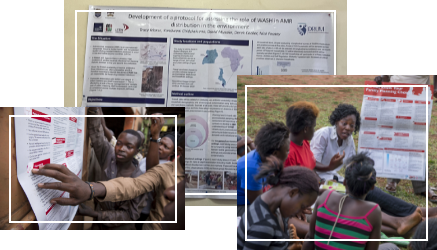|
This phase is crucial to avoid confusion and frustration. Before you jump into creating the poster you need to define the important elements needed such as your target audience, key messages, and design needs. Once you have set idea and approach on these elements it simplifies the next phases where you will be working with a designer and successfully reviewing the content and layout. Target Audience
Do you need to have only one audience? NO! Remember, you can do poster adaptations and aim at different audiences by breaking down the content of your research findings into smaller targeted pieces (see CHAIN posters as examples below). Example of CHAIN communication posters:
Key messagesNow that you have identified your target audience, crafting your key messages is the next crucial step. The number of key messages should be limited, for example, to 3. They are important points we want the audience to take away. All the other content will support the key messages.
Be plain, straightforward, and concise. |
|
"The appeal of the message allows the public to accept it on sensorial, emotional, social, intellectual, and economical levels. […] Confusion and ambiguity can carry conflicting messages; therefore, negative examples should be avoided." Tovar Samanez C. El cartel como medio de comunicacion [The poster as a communicationmedium]. CuadComun AMIDEP. 1987;(1):33-8. Spanish. PMID: 12281468. |

 A target audience provides a clear focus of whom your research will benefit and why they should engage with your research. Determining this information makes designing the poster more successful because you will know how to attract your target audience through tailored images and words. Ideas to define your audience:
A target audience provides a clear focus of whom your research will benefit and why they should engage with your research. Determining this information makes designing the poster more successful because you will know how to attract your target audience through tailored images and words. Ideas to define your audience: